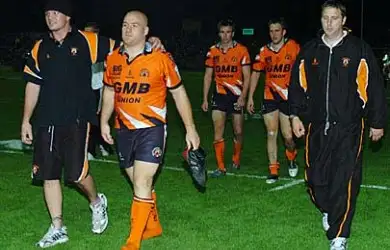Union set-up leaves much to ponder

The rival rugby codes have been nabbing players and sharing rules off each other for many a year, but one thing they seemingly won’t be sharing is the abolition of promotion and relegation.
Of course in 2008, the trap door from Super League was slammed shut in favour of the licensing system, which means clubs outside the top flight must wait three years until the next stage of licensing for their chance to move up a league.
Replicating this system in rugby union’s Guinness Premiership is now being mooted, together with a Super League-like expansion to 14 teams.
The speculation gained such momentum that the RFU were forced to come out with a statement, that read: “Making a change of this nature is not a decision for PRL and its broadcasters to make – it would require RFU approval and that is unlikely to be forthcoming at the current time.
“The concept of relegation and promotion is legally enshrined in the eight-year agreement between PRL, its clubs and the RFU which lasts through until 2016.”
It would be interesting to hear the reasons behind this move. The abolition of promotion and relegation in rugby league has created a split between fans, but it remains difficult to weigh up the pros and cons of both solution fairly. For instance, on the one hand it gives Super League clubs the safety and security of a three year tenure to enable them to develop young players, but for clubs outside the top flight, it perhaps renders some of their games meaningless, as it does with some games at the back end of the Super League season.
But what is perhaps more interesting about rugby union’s position is that the interests of the game as a whole are handled authoritatively by the governing body, the RFU, while the Premiership is governed by Premier Rugby.
Of course initially, Super League was governed by Super League (Europe), until it was integrated fully into the RFL in 2002. But this means that the community game and the lower tiers of the professional game struggle to have their voice heard, as generally the bigger clubs get their say. Would the sport as a whole be more efficient if there was a separate body taking care of the interests of Super League clubs, while the RFL concentrated on the widespread growth of the game?
An alternative of course would be for the Championship clubs to create their own governing committee, reporting to the RFL, but the lack of funds and power in the lower leagues might put paid to that. It would at least enable the Championship to negotiate its own TV deal, rather than being an after thought – both in terms of coverage and revenue – to the existing SKY Super League deal.
As a sport, rugby league has got to be careful that Super League doesn’t become an elitist competition which dismisses those who are outside of it. Some clubs may be happy to battle on as they are, but others won’t be. What happens, for instance, if Leigh get knocked back for a second time in 2011? Where do they go from here? It’s questions like that which remain unanswered.
The RFU have a wider interest in maintaining promotion and relegation because they have invested in turning the second tier professional. This was a big step for them, and of course it enables the transition between the Premiership and the Championship. Promotion and relegation is also retained between the Championship and National League 1, giving a clear path of progression.
Perhaps the RFL’s long term goals include having two full time “Super Leagues” that incorporate the increasing number of aspiring clubs, the likes of Barrow, Featherstone, Halifax and Widnes. If the sport can sustain and support enough clubs and players to fill 24 clubs on a full time basis, maybe two leagues of 12 aren’t far away. But who knows where we’ll be in ten years time, or indeed what the long term aims and objectives of the licensing system are.
With the mooted switch of the amateur game to the summer, and the possibility of a merger between the thriving summer conference and BARLA, maybe the establishment of a rugby league pyramid, and a clear pathway from top to bottom, isn’t far away.